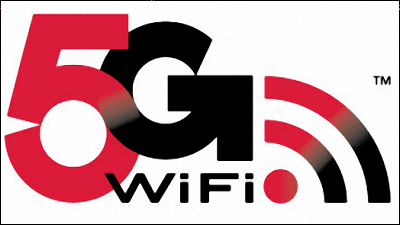The Wi-Fi alliance starts the authentication of the 802.11ac second stage "Wave 2", specifications such as MU-MIMO are officially added

ByChris Oakley
It becomes the second stage of wireless LAN standard "802.11 ac" "Wave 2Authentication of equipment corresponding to "officially began. By doing so, specifications such as "MU-MIMO", "160 MHz channel", "4 spatial stream" etc. will be officially recognized that enable higher-speed and higher quality communication than before.
Wi-Fi CERTIFIED ™ ac brings new advances in Wi-Fi® performance | Wi-Fi Alliance
http://www.wi-fi.org/news-events/newsroom/wi-fi-certified-ac-brings-new-advances-in-wi-fi-performance

Wi-Fi gets multi-gigabit, multi-user boost with upgrades to 802.11 ac | Ars Technica
http://arstechnica.com/information-technology/2016/06/wi-fi-gets-multi-gigabit-multi-user-boost-with-upgrades-to-802-11ac/
It is a trade association that promotes the spread of wireless LAN and certifies compatible equipment "Wi-Fi Alliance"Launched a new certification program that corresponds to" Wave 2 "which can be said to be the second generation of the 802.11ac standard on June 29, 2016 (American time). In Wave 2, it supports multiple communications with gigabit class bandwidth, and each one performs independent communication that is not delimited on the time axis to prevent lowering of throughputMU-MIMOFor equipment equipped with technology such as "Formal authentication is startedThe point is the biggest point.
Specifications officially added in Wave 2 are as follows.
·MU-MIMO: Equipment compatible with Multi User Multiple-Input and Multiple-Output (MU-MIMO) can transmit and receive data to multiple devices at once by having multiple antennas (= communication channels) Possible. As a result, communication is not interrupted on the time axis, and the throughput is improved
· 160 MHz channel: The channel width widens from the conventional 80 MHz to 160 MHz, theoretically the communication speed doubles
· Four spatial streams: The number of streams that can communicate simultaneously increases from 3 to 4
· Expansion of 5 GHz band channel: The number of channels that can be used at once is increased in the 5 GHz band. This improves communication speed and communication quality
802.11ac which was already authenticated "Wave 1, The communication channel width is 80 MHz, and the maximum communication speed for each stream was 433 Mbps. In Wave 2, since the channel width was doubled to 160 MHz, the maximum communication speed per stream is theoretically improved to 866 Mbps.
In addition, since one Wi-Fi master unit has four spatial streams, communication with devices hanging in each stream is not divided in time, so it can be expected that the communication speed on the bodily sensation will increase It will look like. In the 802.11ac standard, it is possible to support up to 8 streams, but in Wave 2 it is 4 streams. This is because it consumes a lot of power by making it 8 streams.
In addition, increasing the number of channels in the 5 GHz band will also have significant benefits. With this change, it is possible to efficiently utilize the spectrum available, and the interference and congestion of radio waves will be relaxed by decreasing the communication done on overlapping channels.
In addition, the specification of the 802.11ac standard itself has been done in 2014, and this time the support of the function has been expanded. Equipment equipped with MU-MIMO has already appeared on the market, and GIGAZINE also carried out reviews using real machines.
Performed speed measurement of Buffalo's high-end wireless LAN router "WXR-2533DHP", I examined the potential of Wi-Fi communication exceeding gigabit - GIGAZINE

Related Posts:
in Hardware, Posted by darkhorse_log







